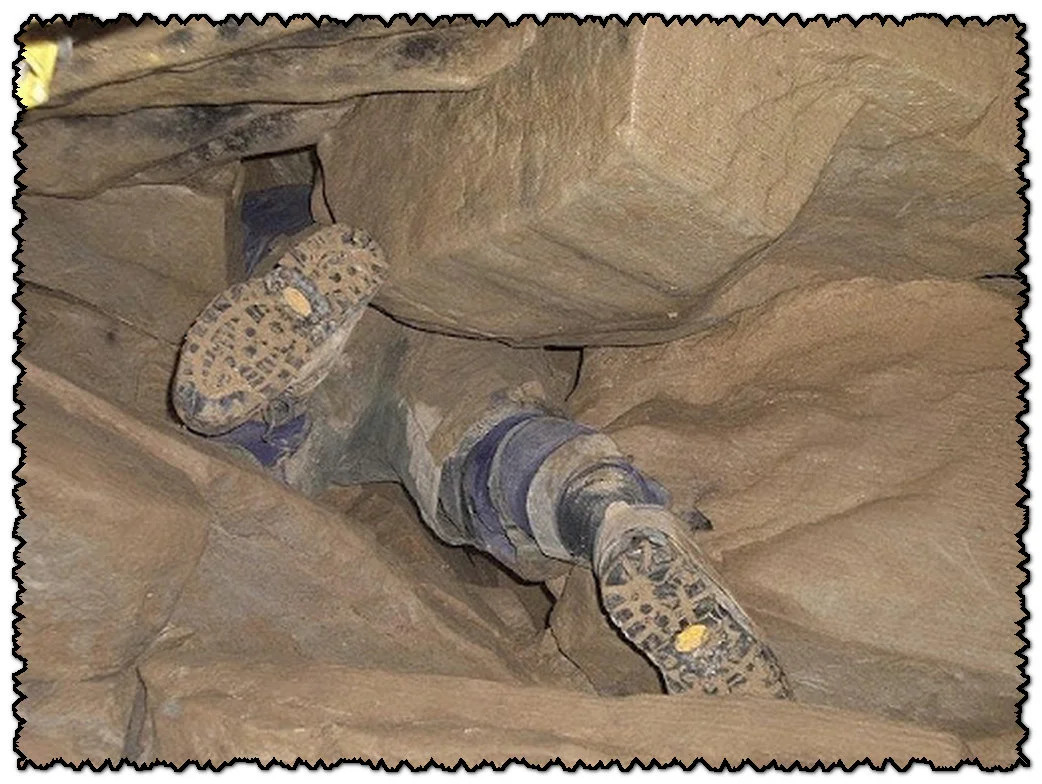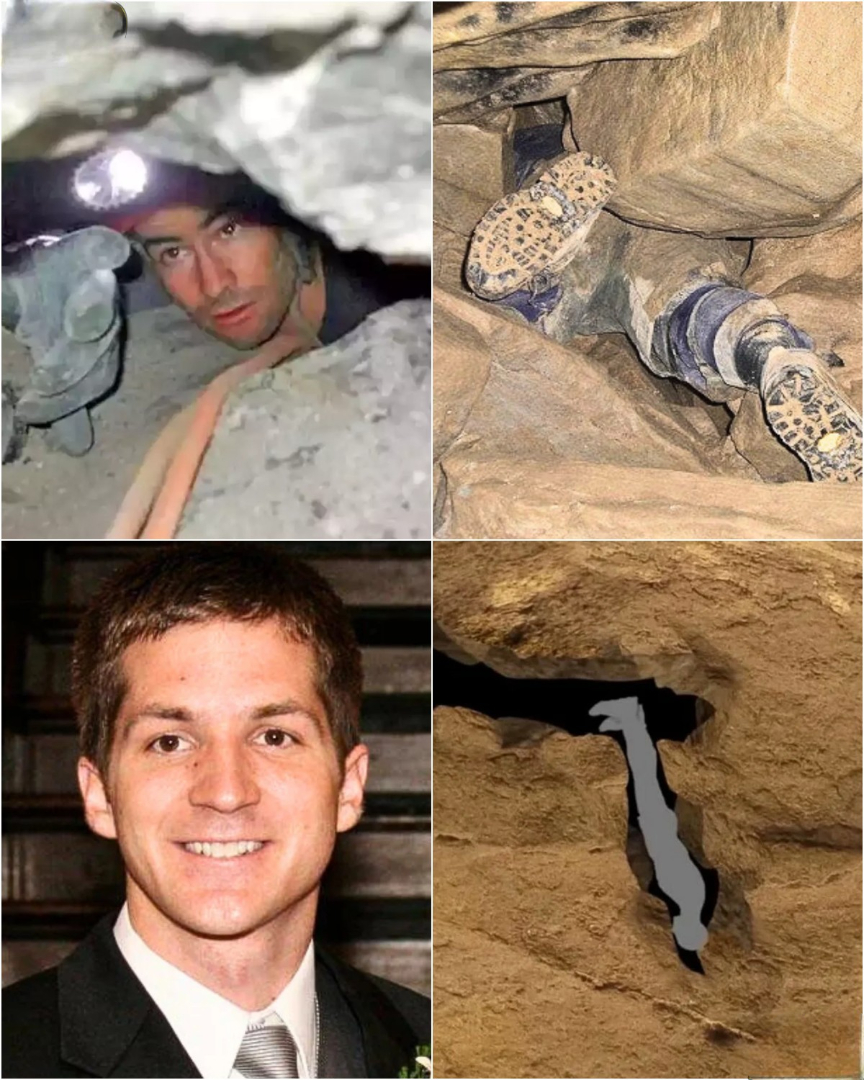- A Routine Adventure Turns Into a Nightmare
On a frigid November evening in 2009, a young medical student named John Edward Jones embarked on what was supposed to be a straightforward caving expedition. At just 26 years of age, John was not only a husband and father but also an experienced explorer with a passion for adventure. However, deep within the notorious Nutty Putty Cave in Utah, this seemingly routine expedition quickly transformed into a harrowing 28-hour struggle for survival that would leave an indelible mark on the caving community and beyond.
The Fatal Wrong Turn
John entered the cave accompanied by his brother Josh and a group of friends, eager to tackle the challenges that lay ahead. Nutty Putty Cave, located roughly 55 miles from Salt Lake City, had garnered a reputation among thrill-seekers for its intricate network of twisting passages and claustrophobically tight squeezes. Many passages were barely wider than a human body, with some sections measuring no more than ten inches across. As John crawled through what he believed to be the “Birth Canal”—a segment known among seasoned cavers for being narrow yet navigable—he unwittingly entered an unmapped shaft situated a mere 400 feet from the cave’s entrance. This wrong turn led him down a perilous path, constricting his body into a nearly vertical position, with his head facing downward and his chest compressed, making it nearly impossible for him to breathe normally.
A Brother’s Desperate Plea
When Josh discovered his brother wedged upside-down, panic set in and he immediately attempted to rescue him. Despite exerting all his strength, every attempt only caused John to slip deeper into the crevice. Realizing the gravity of the situation, Josh found himself whispering a prayer, hoping for guidance. Meanwhile, John managed to muster the strength to plead, “Save me for my wife and kids.” This heartfelt request underscored the emotional weight of the moment—an ordinary caving trip had morphed into a dire fight for survival.

A Massive Rescue Effort Against the Clock
As night fell, the rescue operation grew increasingly urgent. More than 100 rescuers, including firefighters, search-and-rescue specialists, and seasoned cavers, raced to the scene. They devised an elaborate rope-and-pulley system designed to hoist John upward inch by inch. However, the treacherous nature of the cave’s tight, winding passages complicated their efforts, making it a slow and grueling task to transport both equipment and personnel. For hours they persevered, carefully coordinating their every move. At one point, they successfully lifted John several inches, filling everyone with renewed hope. Yet, just before midnight on November 25, a critical pulley malfunctioned, resulting in a catastrophic failure. The rope slipped, and John slid back into the abyss, erasing hours of painstaking progress in an instant.
John’s Chilling Final Words
The failure of the rescue system marked a heart-wrenching turning point. Exhausted and grappling with excruciating pain, John, who had been inverted for over a day, began to sense the inevitable. He whispered to a rescuer, “I’m going to die right here. I’m not going to come out of here, am I?” Even in those bleak final hours, his compassion shone through. When a rescuer named Ryan Shurtz sustained an injury during the rescue, John’s concern for others was palpable as he softly inquired, “Is he OK? I think he’s really hurt bad.” His selflessness, even in the face of his own suffering, illustrated the innate human spirit that seeks to care for others.
A Tragedy That Could Not Be Stopped
After nearly 28 hours trapped in such a precarious position, John’s body succumbed to the strain. The inverted state had forced his heart to pump blood uphill to his legs, an exhausting ordeal that overwhelmed his cardiovascular system. Tragically, shortly before midnight on November 25, 2009, John Edward Jones entered cardiac arrest and passed away deep within the cave. Attempts to retrieve his body proved hazardous, as the narrow passageways and unstable rock formations posed lethal risks to the rescuers. After consulting with John’s family, authorities made a heart-wrenching decision: Nutty Putty Cave would remain sealed forever, entombing John’s body within its depths.

Sealing the Cave and Honoring His Memory
On December 2, 2009, in an act of somber finality, officials used explosives to collapse the section of the cave where John lay. They sealed it with twenty tons of concrete, effectively transforming Nutty Putty Cave into a permanent memorial. A plaque was erected at the site to commemorate a life tragically cut short and to serve as a cautionary tale for future adventurers regarding the cave’s unforgiving nature. This act not only honored John’s memory but also highlighted the potential dangers inherent in caving.
The Legacy and Lessons Learned
The heartbreaking account of John’s death reverberated through the caving community and sparked a broader conversation about safety and risk management in adventure sports. In response to this tragedy, Utah implemented stricter regulations for caving activities, including requirements for permits and enhanced training for rescue teams. Furthermore, John’s wife, Emily, established the John Edward Jones Foundation, which aims to support search-and-rescue training and raise awareness about the risks associated with caving. John’s story was also immortalized in popular culture, inspiring the 2016 film “The Last Descent,” which brought his narrative to a global audience and served as a poignant reminder of the delicate balance between adventure and disaster.
A Sobering Reminder of Nature’s Power
The tragic ordeal of John Edward Jones remains one of the most haunting stories of modern exploration. His final words—reflecting both courage and concern for others—continue to resonate as a cautionary tale for adventurers everywhere. This account serves as a stark reminder that while the human spirit is driven by a desire to explore, the depths of nature require respect and a healthy dose of humility. As we commemorate John’s bravery and the relentless efforts of those who sought to rescue him, we are left with a crucial lesson: no matter how skilled an adventurer might be, the unknown demands a vigilant and cautious approach.

















